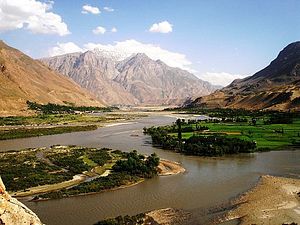Ahead of anti-terror drills, Russia deployed Iskander-M tactical ballistic missile systems to Tajikistan. According to TASS, it is the first time Russia has deployed the system to Tajikistan, the location of Moscow’s largest foreign base.
Known collectively as the 201st Motorized Rifle Division, Russia’s forces in Tajikistan are stationed in two locations: Dushanbe and Qurghonteppa. A regiment was stationed in Kulob, near the Afghan border, but according to Reuters, reporting in February 2016, it had been withdrawn to Dushanbe the previous December.
The missile systems follow four Su-24M tactical bombers, which were deployed to Tajikistan earlier in the month.
Central Military District Troops Commander Colonel-General Vladimir Zarudnitsky said Thursday that the upcoming drills will include firing missiles “at a camp of simulated terrorists based in the mountains,” according to TASS.
The so-called Dushanbe Anti-Terror 2017 drills — which TASS reported were “the first exercise conducted by the CIS Anti-Terrorism Center and involving the armed forces of CIS member-states” — are due to begin their active phase on May 30.
Russia routinely holds counterterrorism drills in Tajikistan, as well as in other countries across the former Soviet Union. In March, Russia and Tajikistan held bilateral counterterrorism drills, reported as involving 2,000 Russian military personnel and 50,000 Tajik troops, which ran concurrently with a much smaller training exercise involving 150 Americans and 100 Tajiks.
These drills in Tajikistan draw particular attention internationally because of the country’s long border with Afghanistan and activity along that front in recent months. Further, rumors attributed to anonymous senior U.S. military officials in Kabul that the Russians are providing the Taliban with weapons add an extra layer to the Tajik-Russian dynamics.
Tajikistan’s border with Afghanistan is marked mostly by the Panj River cutting its crooked way through the Pamir range and then out of the mountains. The border is often referred to as porous, despite considerable investments in Tajikistan border services by international partners concerned, mostly, with the flow of narcotics out of Afghanistan. The flow of extremism and militants is also a concern stated by Dushanbe, though the Taliban has no discernible intentions to invade.
Earlier this month, I discussed how worried Tajikistan ought to be about Taliban activity, coming to the conclusion that Dushanbe should be concerned, “but only as far as one country ought to be disturbed by violence on its borders.” At this juncture, the Taliban are not an existential threat to Tajikistan. But as these annual counterterrorism exercises demonstrate, in both Dushanbe and Moscow, the thinking is that it never hurts to be prepared. Plus, the exercises are a powerful internal show of force.

































